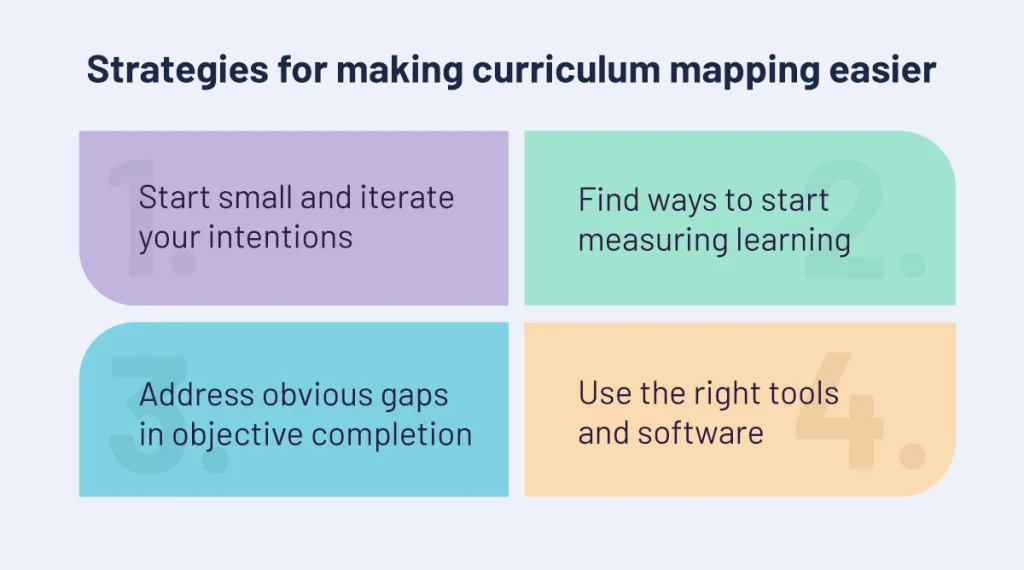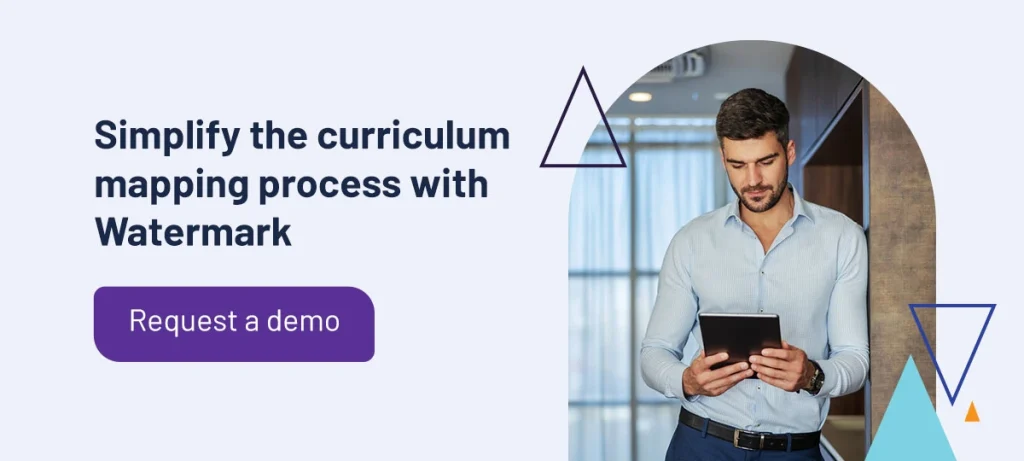




For many institutions, curriculum mapping can be a timely process with many challenges. However, this process is essential for ensuring each program has clear learning objectives and a seamless path for students to follow to achieve them. Faculty, stakeholders, and coordinators must agree on the content in each program, when to teach it, and the methods educators use to relay essential information.
Although this process may seem lengthy, there are many ways to make it easier so you can see benefits among students and within your institution.
Curriculum maps are documents depicting how and what content an educator will teach in the classroom. These documents allow instructors and decision-makers to align courses within an academic program and create a comprehensive and seamless flow. This lets students follow a clear path while obtaining necessary information and making lasting connections between classes and course materials.
The curriculum mapping process has many benefits for students and institutions, creating a powerful tool for colleges and universities. This process achieves multiple objectives, including finding assessment opportunities, identifying gaps, planning instruction sequences, and improving the student learning experience.
You can use a curriculum map to:
Navigating the curriculum mapping process can be simple with the right tools and strategies. Although you will likely need to make adjustments throughout the process to address your unique institutional needs, there are several strategies you can implement to get on the right track:

Like many processes, you can benefit from starting small with curriculum mapping. Review your current course offerings and identify the outcomes each course aims to cover. After identifying this information, you can look closely at the program to incorporate levels of introduction, reinforcement, and mastery. This simple step allows you to create an alignment map, which can make tracking processes simpler later. This strategy can enhance collaboration among faculty, as they work together to find unique ways to reinforce information rather than simply repeating it across classes. You can use this as a guide to ensure each class brings unique value to each student while strengthening the connection between new and learned information.
You should never make changes without having data to support the adjustment. To determine current learning outcomes and gaps, you must gather student information and make comparisons across student populations, different programs, and similar areas. Clear-cut assessment opportunities such as major projects and capstone assignments are excellent opportunities for reviewing data.
It is essential to maintain accurate records as you progress. Instructors should keep a record of learning activities, assessments, and any adjustments they made during information presentation. You can then use this information to identify trends over time and tweak the maps for future students and programs.
When evaluating the information you collected in the previous step, you’ll likely spot areas for improvement. For instance, if you notice many students are struggling with a specific outcome, start there. Take a close look at the curriculum to determine where you and your faculty can make adjustments to build on student knowledge.
After addressing these pain points, create a consistent method for the curriculum mapping process. Whether you implement professional development opportunities, training sessions, or a specific procedure, ensure you utilize the same method each time.
This consistency will make it easier to repeat the mapping process as you move across departments and ensure your stakeholders and faculty members remain on the same page regarding your goals and initiatives. Creating a repeatable process will also make it easier to compare successes and failures if one program or class begins to stand out over others, allowing you to quickly address the issue and bring students back up to speed.
Innovative technology and advanced software solutions offer simple workflows with reduced tasks. Leveraging the right tools is one of the best ways to simplify the curriculum mapping process while enhancing other workflows. For example, Watermark Planning & Self-Study allows you to report on, track, and create connections between courses and learning outcomes. This solution empowers you to quickly determine whether courses are covering their intended outcomes and define where assessments should take place to define more helpful maps.
Planning & Self-Study also foster productive, action-oriented discussions to drive continuous improvement. From linking assessment plants to curricula to accessing collaborative program reviews to measuring outcomes across your entire institution, you can use this solution to complete strategic planning in one centralized system.

Watermark offers a centralized system for driving continuous improvement in higher education institutions. Our solutions simplify workflows and automate repetitive tasks, so you can spend more time less time collecting valuable insights and more time reviewing your most crucial information.
Watermark Planning & Self Study is a simplified curriculum management system that powers student success and enhances communication among faculty, decision-makers, and stakeholders. This solution has helped drive over 35,000 changes in curriculum development at various colleges and universities by streamlining curriculum development, gathering student feedback to drive decisions, and keeping real-time updates with an online catalog. Request a demo of this comprehensive solution to discover how you can drive change at your institution.





























































































































































































































































































































































































